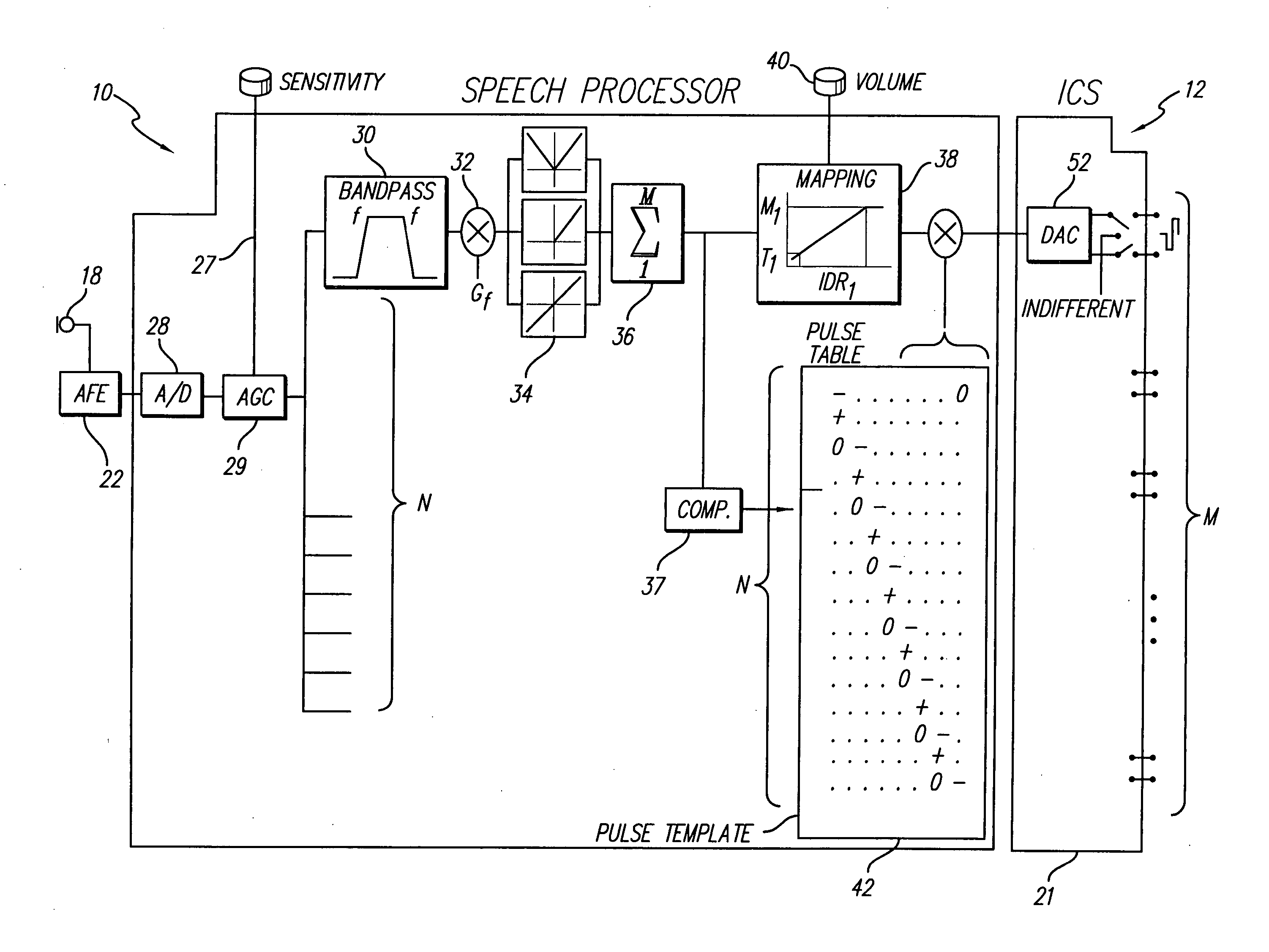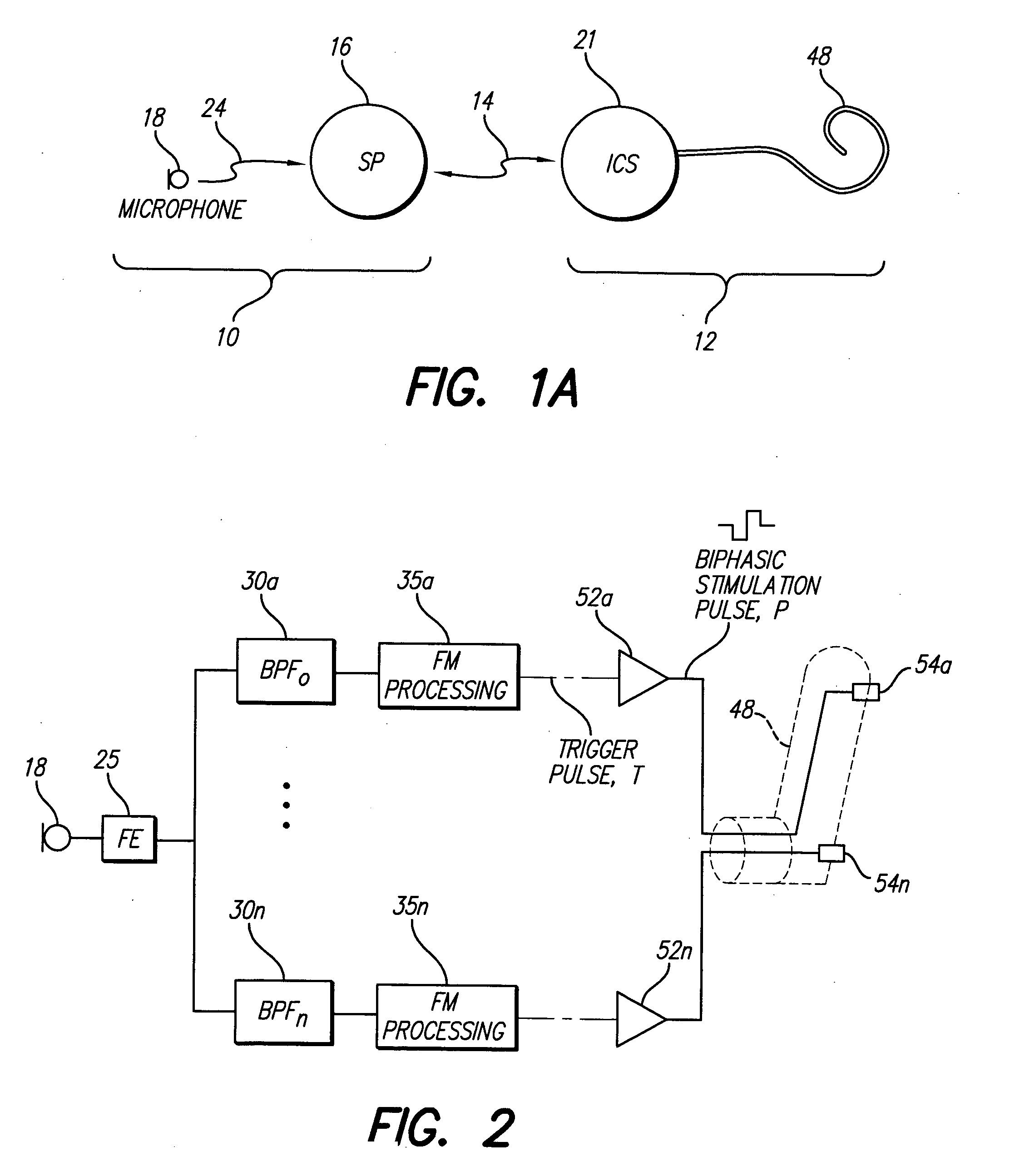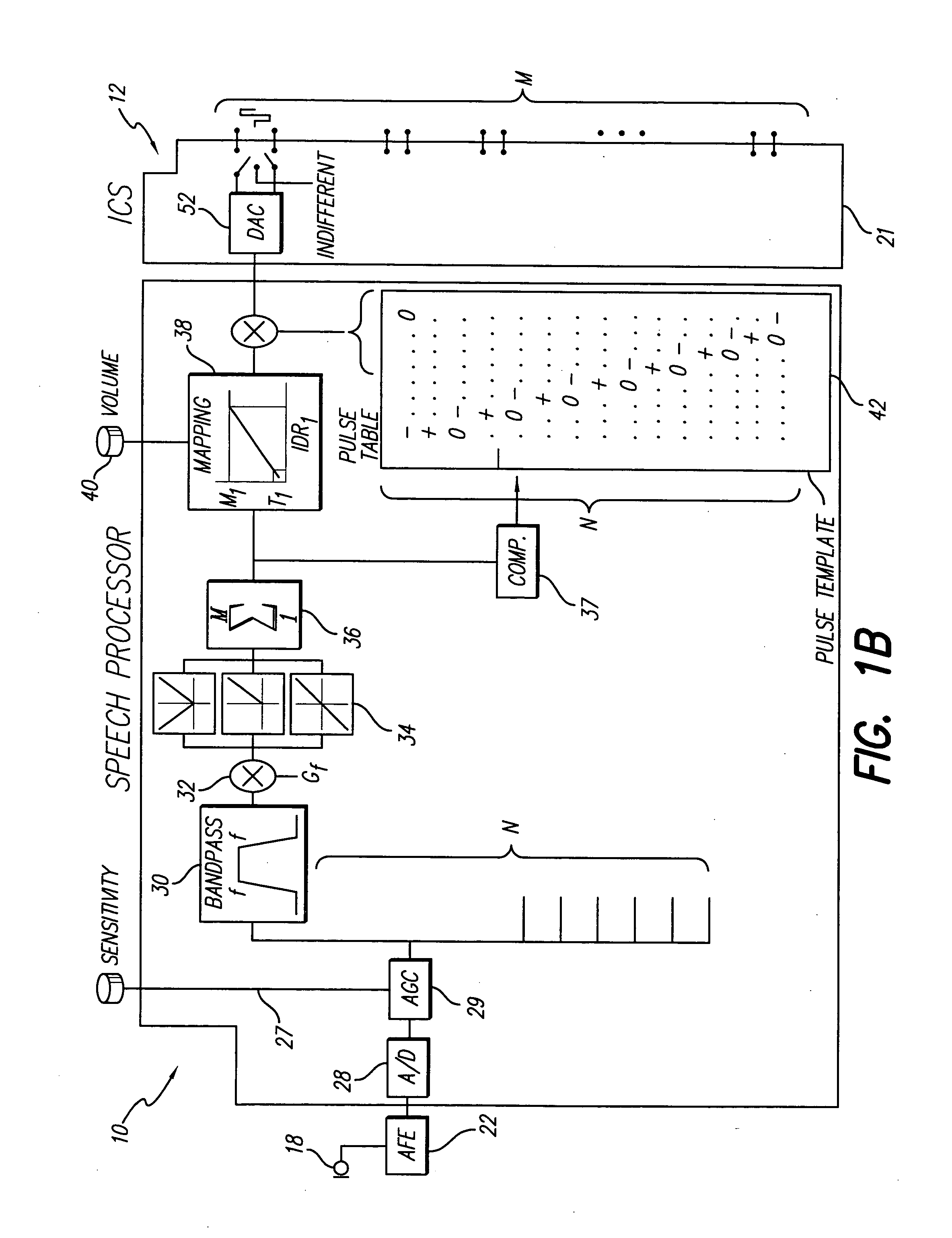Frequency modulated stimulation strategy for cochlear implant system
a cochlear implant and frequency modulation technology, applied in electrotherapy, therapy, etc., can solve the problems of one strategy being used at the expense of the other, and achieve the effect of reducing power consumption and more natural sound
- Summary
- Abstract
- Description
- Claims
- Application Information
AI Technical Summary
Benefits of technology
Problems solved by technology
Method used
Image
Examples
example 1
[0077] A first patient, who had previously been using a CIS strategy, was fitted with a cochlear implant of a first type using the FMS strategy of the present invention. It is noted that during the fitting process of most cochlear implants, regardless of the strategy that is employed, “M” and “T” levels are measured in order to adjust the intensity of the electrical stimuli that are applied to the patient. See, e.g., U.S. Pat. No. 6,289,247, previously incorporated herein by reference, for a more detailed explanation of the overall fitting process, including a more detailed description of “T” and “M” levels. A “T” level is a stimulation threshold level below which the patient is generally not able to perceive the stimulation, i.e., neural firing does not occur. An “M” level is a stimulation intensity that is generally comfortable for the patient, i.e., neural firing does occur, but not at a level that is too intense or uncomfortable. The “M” and “T” levels, especially the “M” levels...
example 2
[0080] A second patient, also previously using a CIS strategy, and having a second type of cochlear implant, was fitted using the FMS strategy of the present invention, with the RP set to 3 ms. The “M” levels decreased from 676 to 480 on average. The perceived sounds were good, with good speech perception. Music was reported as sounding more “full”. A voice of a nearby person was reported as sounding somewhat “scratchy”. The power expended was 2.8 times better than was achieved using the CIS strategy.
[0081] The RP of this second patient was then modulated to be 6 ms for low intensity sounds and 3 ms for high intensity sounds. The “M” levels decreased from 676 to 542 on average. The patient reported that the implant worked well, and said that music “sounds great”. The patient wanted to continue using the FMS strategy on an extended basis. No “scratchiness” or other complaints were noted. The power expended was 3.0 times better than when using the CIS strategy.
[0082] As described ab...
PUM
 Login to View More
Login to View More Abstract
Description
Claims
Application Information
 Login to View More
Login to View More - R&D
- Intellectual Property
- Life Sciences
- Materials
- Tech Scout
- Unparalleled Data Quality
- Higher Quality Content
- 60% Fewer Hallucinations
Browse by: Latest US Patents, China's latest patents, Technical Efficacy Thesaurus, Application Domain, Technology Topic, Popular Technical Reports.
© 2025 PatSnap. All rights reserved.Legal|Privacy policy|Modern Slavery Act Transparency Statement|Sitemap|About US| Contact US: help@patsnap.com



